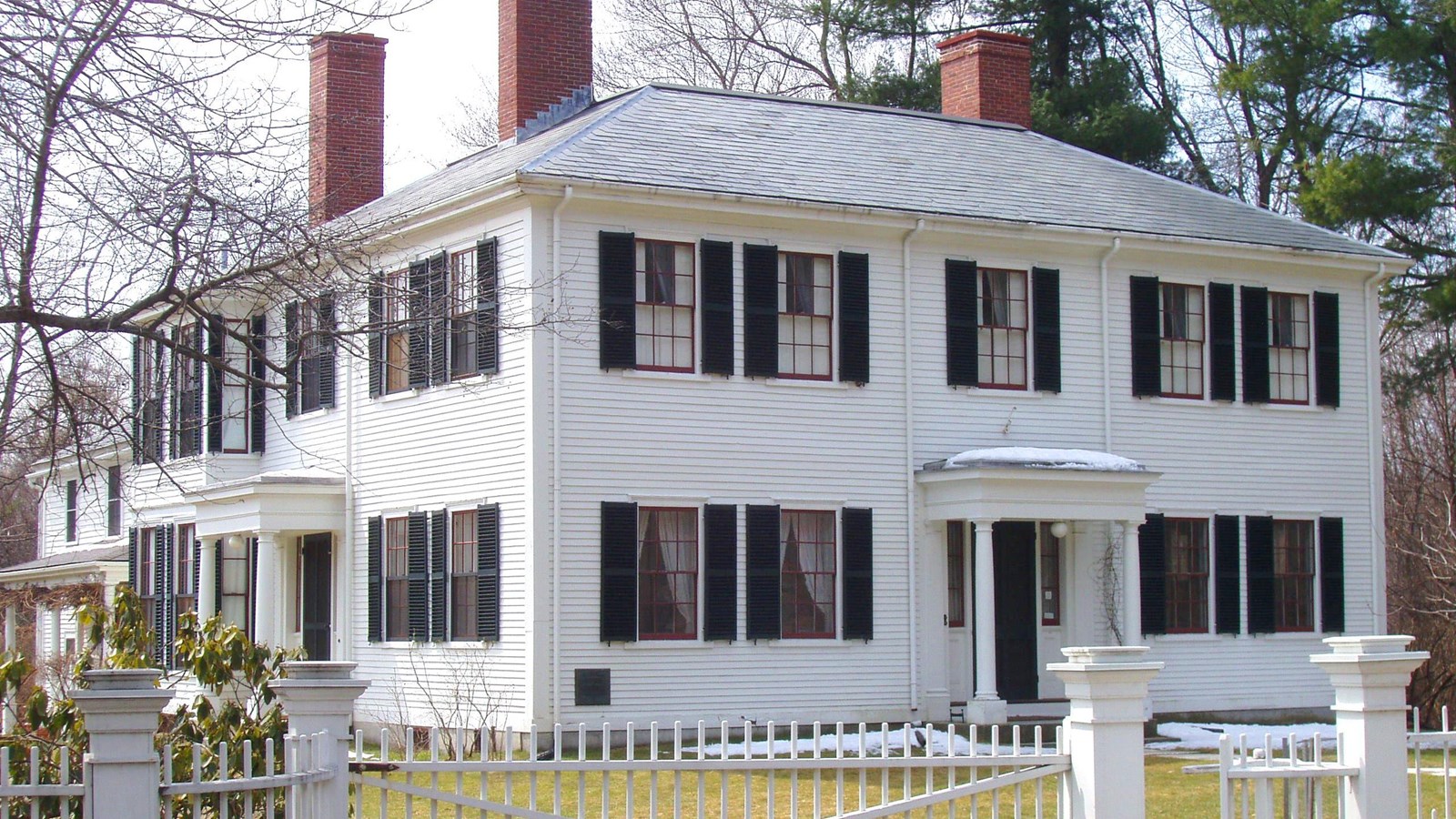Last updated: May 20, 2025
Place
Ralph Waldo Emerson House

Photo by Daderot, CC BY-SA 3.0, https://commons.wikimedia.org/w/index.php?curid=1918915
Ralph Waldo Emerson, Transcendental philosopher, poet, and lecturer, moved into this house with his wife Lidian shortly after their marriage in 1835. It was his first permanent home in the largely rural community of Concord and the place where he raised his family. In this dwelling, Emerson composed his most important written works, including the final draft of his groundbreaking essay Nature in 1836 and Self Reliance in 1841. Emerson’s new residence helped make Concord the center of American Transcendentalism, home of the Concord authors, and the place that sparked a new literary renaissance.
Emerson’s most notable works explained his philosophy and ideals, including his belief that nature served as a source of spiritual inspiration. Emerson’s speeches and writings attracted kindred spirits to Concord, many of whom visited Emerson at his home. One of his greatest strengths was to inspire others to develop their own talents. Many of his guests became important figures in the Transcendental movement in their own right, including Henry David Thoreau, Margaret Fuller, Bronson Alcott, and Elizabeth Peabody. Emerson lived in the house until his death in 1882.
Emerson purchased the property called “Bush” in 1835, which included the house, a barn, and two acres of land. He renovated the house, added two rooms, and expanded his property to encompass a total of nine acres. The interior of the house follows a center hall plan with two large, square rooms at either side. To the right of the main entrance is Emerson’s study, where he did the majority of his reading and writing. Across the hall is a room that Emerson called the “Pilgrim’s Chamber,” or the guest room. The house was conveniently located on the stagecoach run that brought guests directly to the door.
On July 24, 1872, a fire destroyed the roof and much of the second floor. Townspeople saved the books and manuscripts, and Emerson’s friends helped pay to restore the house, expanding the second floor. During the restoration of the home, Emerson and his family stayed at The Old Manse in Concord.
The property maintains a rear garden sloping down the meadow to Mill Brook. Emerson’s journal entries make note of his efforts to tend a vegetable garden and orchard. A trail through the back of the property and across Mill Brook led to Walden Woods, one of Emerson’s favorite places for walks.
The house stayed in the Emerson family until 1930, when Emerson’s son Edward died. The Ralph Waldo Emerson Memorial Association was established to maintain and manage the Emerson house and property. All of the rooms remain as they were after the 1872-1873 restoration, with the exception of the study. The original contents of that room were removed to the Concord Museum, and replaced by duplicate pieces around 1930.
The Ralph Waldo Emerson House is located one mile east of Concord Center at 28 Cambridge Turnpike in Concord, MA. The house has been designated a National Historic Landmark. For fee and scheduling information, visit the Ralph Waldo Emerson House website. The house is not handicap accessible.
To discover more Massachusetts history and culture, visit the Massachusetts Conservation Travel Itinerary website.
